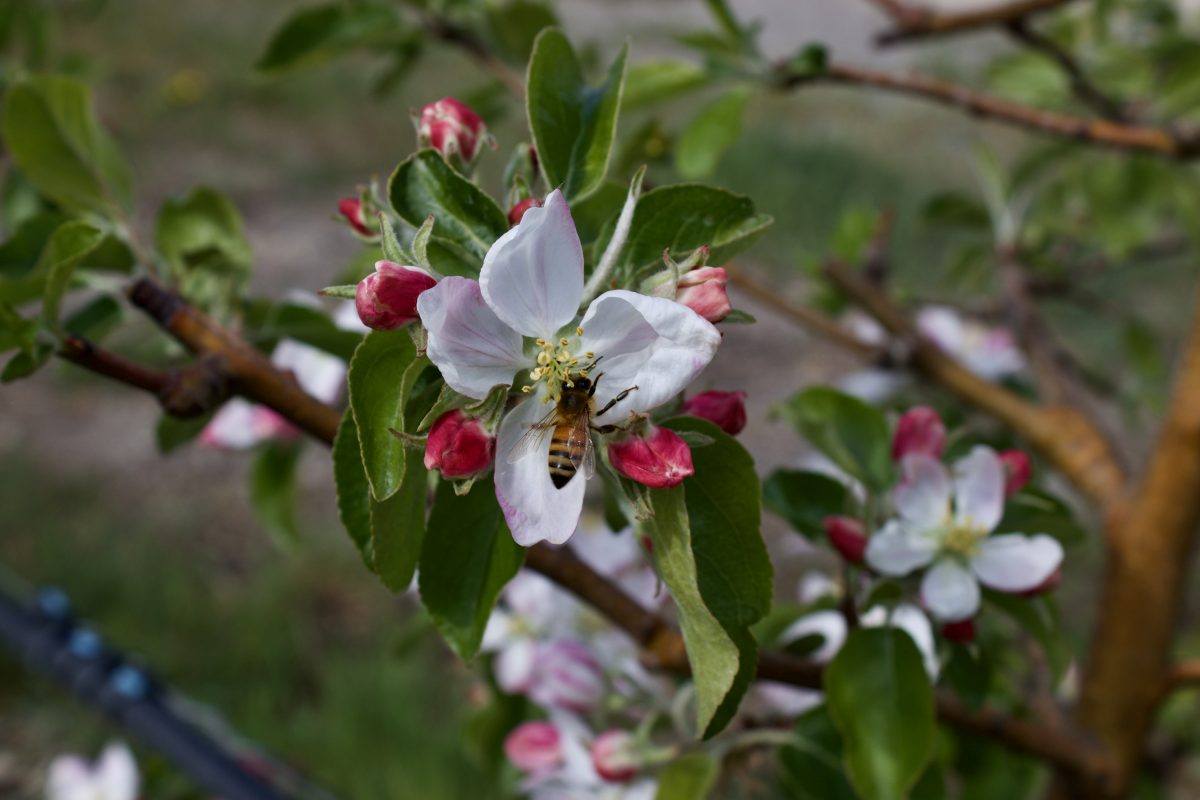Pollination Time
Each time the helicopter comes to apply pollen on our apple tree bloom, it’s always exciting.
Tell Me More…
The pilot has to fly low by Grandma’s house and follow tree rows to get the pollen where it needs to be. Last year we did this for the first time to this orchard. I forgot to tell Grandma the plan. When he showed up, she thought a crazy helicopter decided to buzz her house just to terrorize her and Grandpa. As he passed, she gave the pilot her most intimidating stance on the deck involving her fist shaking in the air and her lips forming the words f&#! off repeatedly. He just kept flying over the orchard, causing my parents quite a fright! My bad!

Bee Pollination
So why hire a helicopter to drop pollen when we have bees to move it around?
So why hire a helicopter to drop pollen when we have bees to move it around? No, it’s not to scare away the relatives! Since we farm for a living, we try to maximize our success rate by deploying every form of assistance possible, including prayer. This orchard is Minnieska and requires cross-pollination from another variety of apple to get an excellent fruit set. Although we rent hives at a rate of 1-2 hives per acre to promote the pollen transfer by honeybees, several conditions mess up that plan. Cold breezy weather is one condition. Bees don’t like temperatures below 65°, and if the bloom in the Minnieska and pollinizers are not synchronized, then helicopter help is available.
Bees don’t like temperatures below 65°, and if the bloom in the Minnieska and pollinizers are not synchronized, then helicopter help is available.
For more information about pollination, click here.

Pollinizers
We space our pollinizer trees every 100 feet in every third row. In a perfect world, the pollinizers, including Winter Banana, Snowdrift crabapple, Manchurian crabapple, would bloom the day before we need the pollen for the Minnieska bloom. Oh, and the wrong pollen is the same as no pollen. What we have the helicopter apply is a particular kind that helps us set a full crop.

Helicopter Pollination
In theory, bees can take a brief vacation when the helicopter drops the pollen, but it’s always good to overdo it. With rotor wash, there is tremendous air movement, thus pollen movement. The pollen goes directly onto the flower and pow! Fertilization occurs! Bees and helicopters, everybody’s takin’ care of business, including Grandma and Grandpa, who now know to hang on to their coffee cups when the chopper shakes the house.